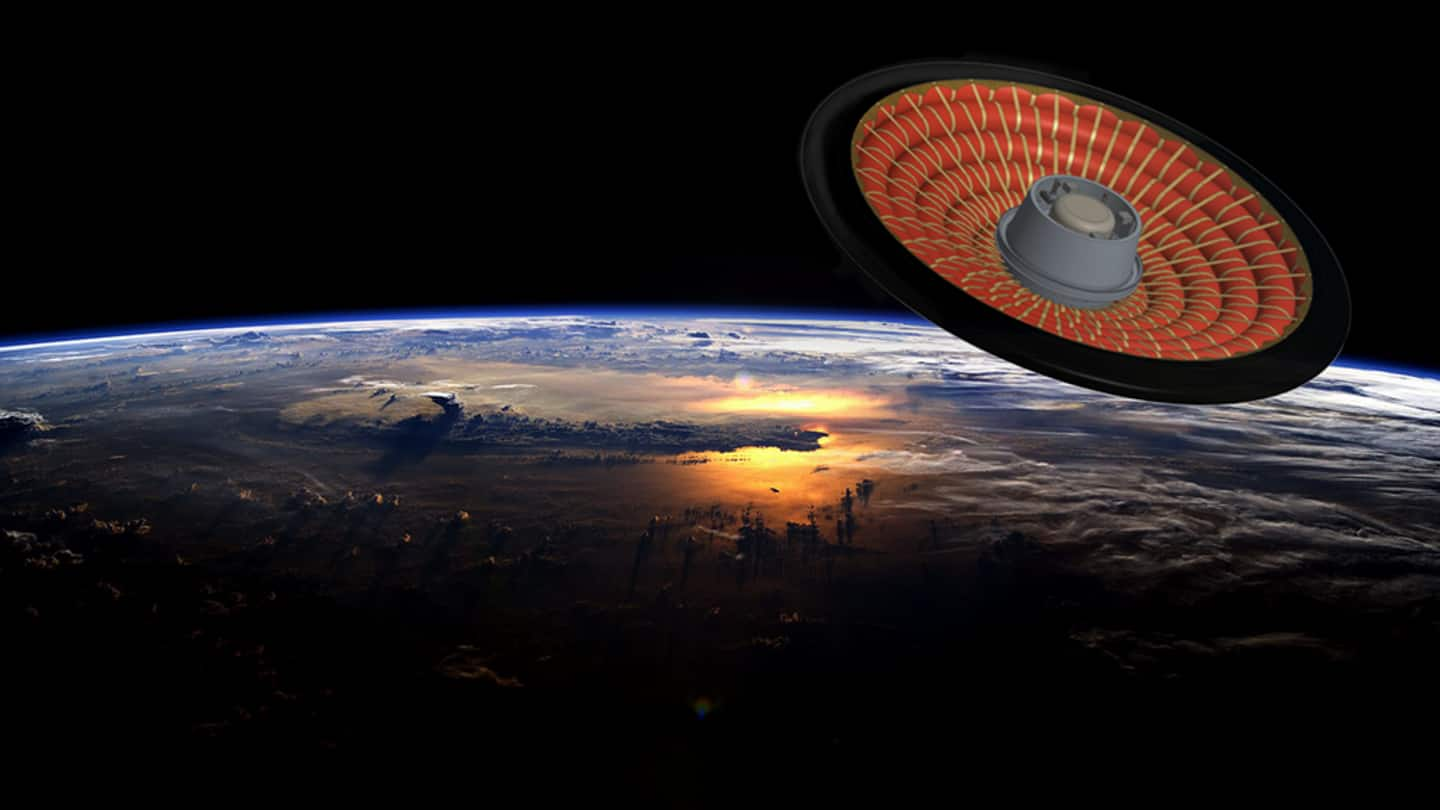
NASA successfully tests LOFTID technology instrumental for future planetary missions
What's the story
The demonstration of NASA's LOFTID (Low-Earth Orbit Flight Test of an Inflatable Decelerator) is a success.
NASA's official video shows how the aeroshell detached from its parent, the Atlas V rocket, and made its re-entry to Earth. The aeroshell safely splashed down in the Pacific Ocean.
LOFTID had lifted off along with the JPSS-2 (Joint Polar Surveyor System-2) weather satellite on November 10.
Context
Why does this story matter?
NASA has been sending robotic explorers to our neighboring red planet, and so far the agency could port approximately one metric ton of payload like the car-sized Perseverance Rover.
But LOFTID is groundbreaking. It can carry up to 20 times the current payload. It can help NASA bring back objects from the Earth's orbit, and send crewed missions to Mars in the future.
Features
First, take a look at the highlights of LOFTID mission
LOFTID, a 6-meter-wide inflatable heat shield, is the largest blunt body aeroshell to ever go through the atmospheric entry.
The $93 million mission has the capacity to land 20 to 40 metric tons of payload on the Martian surface.
NASA has spent over a decade developing the Hypersonic Inflatable Aerodynamic Decelerator (HIAD) technology and has finally tested it successfully.
Twitter Post
Check out LOFTID's re-entry to Earth
Go #LOFTID! See our inflatable heat shield @NASA_Technology test separate from its @ulalaunch Centaur upper stage rocket. Watch live through splashdown: https://t.co/BgScjbdJW6
— NASA (@NASA) November 10, 2022
How LOFTID might help land future astronauts on Mars: https://t.co/eDRGA9TbKf pic.twitter.com/1y9Tf34KtJ
Details
LOFTID was released an hour after JPSS-2 was deployed
To recall, the JPSS-2 weather satellite was the primary payload on the ULA Atlas V rocket.
LOFTID was powered on only 90 minutes after the take-off to ensure that there were no mishaps during the deployment of the weather satellite from the rocket.
Once the aeroshell's systems were turned on, its structure gradually inflated and made a parachute-guided landing in the ocean upon re-entry.
Recovery
LOFTID splashed down in the Pacific Ocean, near Hawaii
The team recovered the LOFTID vessel from the Pacific Ocean, about 800km from Hawaii. It carries the original copy of the data recorded during the demonstration.
The aeroshell also has an ejectable backup data module, which has also been retrieved.
We will have to wait to know how the technology performed as experts carry out inspections on the aeroshell and analyze the obtained data.
Current status
JPSS-2 has been renamed NOAA-21
JPSS-2 is the third in a series of five advanced polar-orbiting satellites designed by the National Oceanic and Atmospheric Administration (NOAA).
The JPSS-2 polar satellite has been renamed NOAA-21 upon reaching its target orbit. It has already commenced operations as one of its four solar panels is positioned toward the Sun.
It can help forecast extreme weather conditions like hurricanes, snowstorms, and other events.